- Home
- Prelims
- Mains
- Current Affairs
- Study Materials
- Test Series
Feb 26, 2022
WHY DOES THE WORLD NEED A LIBRARY OF UNDERWATER SOUNDS? A SCIENTIST EXPLAINS
An international team of scientists has proposed a global library to document underwater biological sounds (GLUBS). The researchers discuss the benefits of the web-based platform in a study published in Frontiers in Ecology and Evolution.
Highlights of the study
 India-Bangladesh Relations
India-Bangladesh Relations
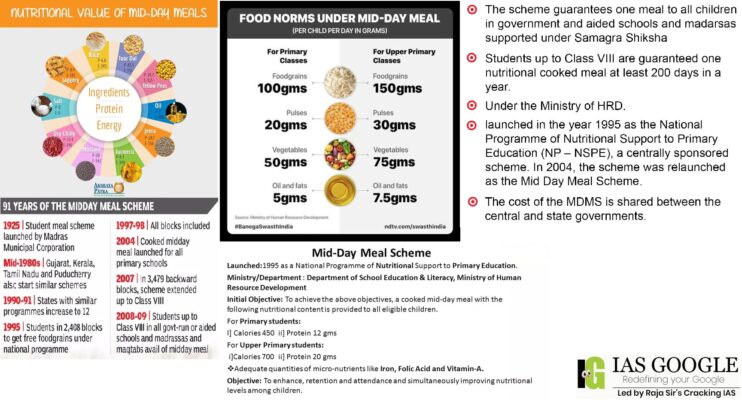 Mid-Day Meal Scheme
Mid-Day Meal Scheme
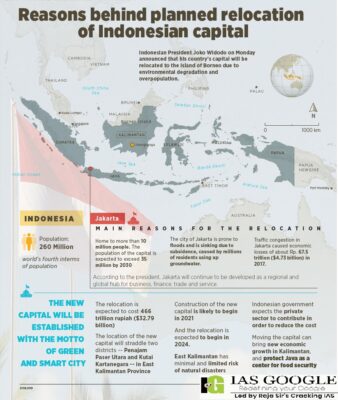 Why Shift in Capital?
Why Shift in Capital?
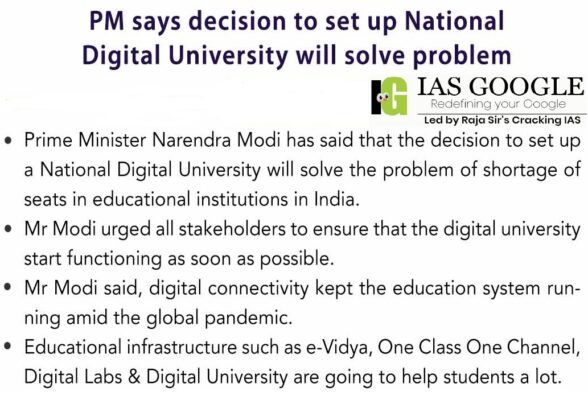 National Digital University:
National Digital University:
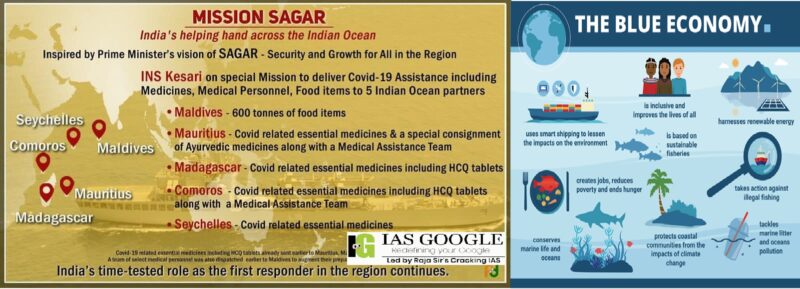 Security and Growth for all in the Region
Security and Growth for all in the Region
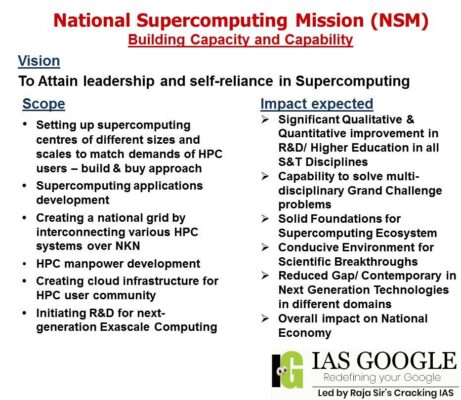 National Super Computing Mission (NSM)
National Super Computing Mission (NSM)
 PM CARES for Children Scheme
PM CARES for Children Scheme
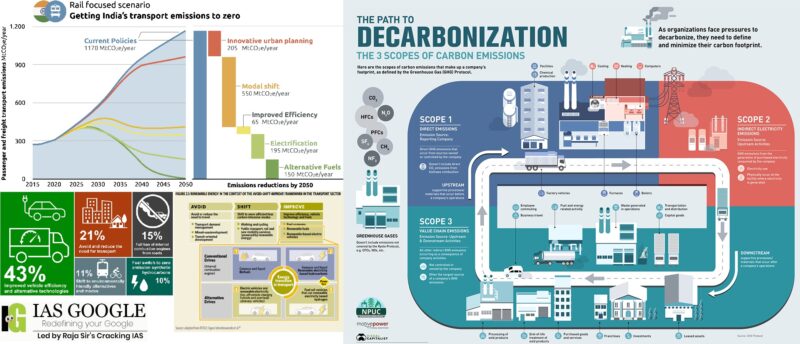 Why ‘Financing for Decarbonization of Transport’?
Why ‘Financing for Decarbonization of Transport’?
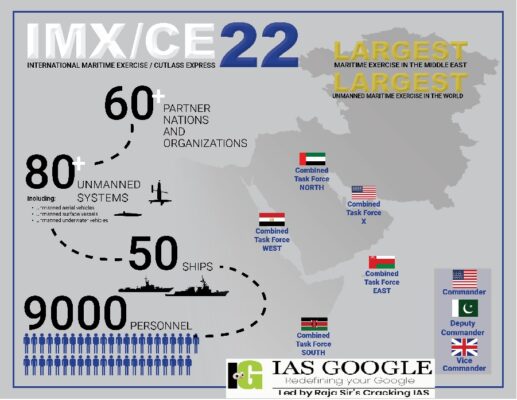 Genesis:
Genesis:
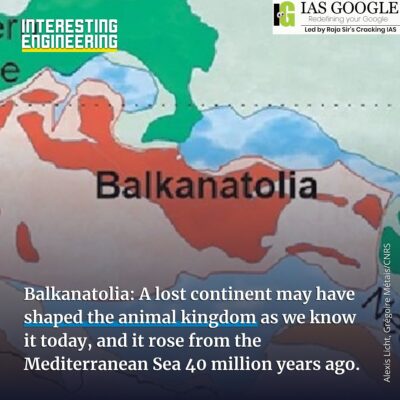 Balkanatolia
Balkanatolia
- Study reports roughly 250,000 known marine species, scientists think all 126 mammals, at least 100 invertebrates and 1,000 of the world’s 34,000 known fish species produce sounds.
- Underwater creatures use sounds to communicate, make sense of their surroundings, find food and protect themselves.
- These sounds can help scientists study ocean life as most species are nocturnal or hard to find. It could help identify new species and monitor how human activities impact the known aquatic species.
- Helping them listen to marine life is passive acoustic monitoring (PAM), a technology that uses hydrophones to record sounds underwater.
- Sound libraries are similar to traditional public libraries. The idea of creating them is not new. There have already been many sound repositories worldwide, but they are usually limited in scope.
- They focus on a particular region or species group, for instance. Some examples include FishSounds.net, Marine Mammals of Australia and Antarctica.
- These libraries exist in isolation, limiting their ability to be applied to a wide variety of uses.
- A global, integrated library would hopefully garner greater funding appeal.
- In 2019, scientists described a new species, Johnius taiwanensis. Acoustic analysis showed that it produces a sound unique to the waters around coastal Taiwan.
- There is also a particular interest in using sound to understand diversity in difficult to access locations like the deep sea, though implementation has been limited so far.
- Biological sounds can be especially helpful in describing the distribution of underwater species that would be otherwise hard to find.
- Sounds have been used to track invasive species, such as the lionfish (found in warm marine waters of the tropics) or freshwater drum (present in Canada, the United Kingdom and the United States).
- The global library we propose will help support assessing human impacts on oceans. By listening to underwater sounds at proposed mining sites, we may tell whether complex communities exist in a particular area and recommend alternative locations.
- In addition to destroying habitat, mining may create a lot of noise that could hurt marine animals directly or cause behavioural and physiological changes. This could be further studied with passive acoustics.
- Compared to recording sounds on land, it can be much more challenging to identify what might be producing a particular sound underwater due to reduced visibility or limited access.
- More concernedly, many libraries have difficulty finding and maintaining funding to ensure their long-term sustainability.
- The ocean is also much larger than land and is more challenging to study in many respects because of size and accessibility. We know more about Mars, including what it sounds like (Mars playlist), than we do for many areas of our ocean.
- Additionally, it will require much greater effort to document the sound production of roughly 34,000 species and invertebrates. We hope that with more affordable technology and the creation of a global library, we will create opportunities for the public to contribute to research efforts through citizen science.
- The programme will be held from Leh and Srinagar to Port Blair and Kavaratti Islands in Lakshadweep from north to south and from Ahmedabad and Daman to Itanagar, Kohima, and Aizawl from west to east, apart from the national capital Delhi.
- The event will display the country’s scientific legacy and technology prowess that has helped find solutions to defence, space, health, agriculture, astronomy, and other sectors.
- The programme will be held in various Indian languages, including Kashmiri, Dogri, Punjabi, Gujarati, Marathi, Kannada, Malayalam, Tamil, Telegu, Odia, Bengali, Assamese, Nepali, Maithili, and Manipur and will include the screening of 75 films.
- 'From the annals of the history of S&T’ to acknowledge the contributions of founders of modern science and institutions. 75 films on 75 scientists and 75 lectures by eminent scientists and technocrats will be screened across the 75 locations.
- ‘Milestones of Modern S&T’ to highlight critical discoveries, innovations, or inventions that made a mark in the global science or India’s development story.
- 'Swadeshi Paramparik Inventions and Innovations’, to showcase 75 inventions or technologies that led India towards self-reliance by drawing upon the reservoir of traditional knowledge systems, such as drugs from herbs.
- 'A Transforming India’, to look at the road ahead for the next 25 years of Indian S&T.
- The programme will not only motivate young children but also ordinary citizens. It will apprise the people about the scientists who have played an important role in making India self-reliant.
- The most important aspect of the Vigyan Sarvatra Pujyate event is to popularize science and increase scientific temper in the country.
- It also aims to inspire India’s youth and help them navigate into building a progressive nation; bring to the fore stories of people in science and their achievements.
- It reinforces the commitment of the scientific community towards the economic and social development of the country.
- It also highlights the work being done by the R&D organizations from across the country.
- Speaking at the 10th India-Bangladesh Friendship Dialogue, Mr. Shringla said, there is a need to work closely to strengthen border infrastructure to ensure smooth transit of goods and people while ensuring that illegal activities are kept under check.
 India-Bangladesh Relations
India-Bangladesh Relations
- India and Bangladesh have signed an agreement on the Use Chattogram and Mongla Ports for Transhipment of Goods to and from North East of India. It will bring economic benefits to a range of stakeholders from both countries.
- North East India will benefit from steady supply of goods, the transport and logistics sector in Bangladesh will gain considerably, bringing prosperity on both sides of the border. India and Bangladesh have made remarkable progress in enhancing connectivity through the use of their inland waterways.
- Gati Shakti initiative is upgrading connectivity in India with a multi-modal perspective. The movement of products from locations of production to places of value addition and consumption needs multiple modes of transportation.
- Both the countries are exchanging best practices in the areas of river embankments and addressing the issue of salinity among others. In view of the impact of climate change, more comprehensive cooperation is required in water conservation, fisheries, flood management, and pollution in rivers. He called for greater synergies in climate action, preserving shared natural heritage such as Sunderbans, etc.
- Bangladesh is India’s biggest trade partner in South Asia and India is the second biggest trade partner of Bangladesh. The two-way trade in the recent past has witnessed a quantum jump with exports from Bangladesh, for the first time, expected to cross two billion dollars.
- The year 2021 will be historic in India-Bangladesh relations as both countries would be commemorating the fiftieth anniversary of the Liberation War and the establishment of diplomatic relations between India and Bangladesh.
- Human resource development is a key component of India’s development cooperation efforts in Bangladesh through its several ongoing training programs and scholarships. Both countries are making efforts to jointly organize several activities to commemorate these two epochal events in India, Bangladesh and in other countries.
- The multi-dimensional cooperation between the two countries ranges from traditional sectors of tourism, health and education to frontier technologies of nuclear science, space, and information technology.
- India and Bangladesh share bonds of history, language, culture, and multitude of other commonalities. The excellent bilateral ties reflect an all-encompassing partnership based on sovereignty, equality, trust, and understanding that goes far beyond a strategic partnership.
- The DRRAA notice said that hot-cooked midday meals in schools did not resume even though schools reopened for physical classes for Classes I to VIII on February 14, following the improvement in the Covid-19 situation.
 Mid-Day Meal Scheme
Mid-Day Meal Scheme
- In 1925, a Mid-Day Meal Programme was introduced for disadvantaged children in Madras Municipal Corporation. By 1990-91 the number of States implementing the mid-day meal programme with their own resources on a universal or a large scale had increased to twelve states.
- The CCEA cleared the PM POSHAN (POshan SHAkti Nirman) Scheme for providing one hot cooked meal in Government and Government-aided schools from 2021-22 to 2025-26, earlier known as ‘National Programme for Mid-Day Meal in Schools’ popularly known as Mid-Day Meal Scheme.
- This is a Centrally-Sponsored Scheme which covers all school children studying in Classes I-VIII in Government, Government-Aided Schools.
- The Cabinet Committee on Economic Affairs (CCEA), chaired by the Hon’ble Prime Minister has approved the continuation of the national scheme of PM POSHAN in Schools for the five-year period 2021-22 to 2025-26 with the financial outlay of Rs. 130794.90 crore.
- The scheme is proposed to be extended to students studying in pre-primary or Balvatikas in Government and Government-aided primary schools in addition to all the 11.80 crore children from elementary classes.
- The concept of Tithi Bhojan will be encouraged extensively. Tithi Bhojan is a community participation programme in which people provide special food to children on special occasions/festivals. School Nutrition Gardens in schools to give children first-hand experience with nature and gardening. The harvest of these gardens is used in the scheme providing additional micro nutrients. School Nutrition Gardens have already been developed in more than 3 lakh schools.
- Social Audit of the scheme is made mandatory in all the districts. Special provision is made for providing supplementary nutrition items to children in aspirational districts and districts with high prevalence of Anemia.
- Cooking competitions will be encouraged at all levels, right from village level to national level to promote ethnic cuisine and innovative menus based on locally available ingredients and vegetables.
- Vocal for Local for Atmanirbhar Bharat: Involvement of Farmers Producer Organizations (FPO) and Women Self Help Groups in implementation of the scheme will be encouraged. Use of locally grown traditional food items for a sake of local economic growth will be encouraged.
- Enhancement of nutritional values among children.
- Help children to develop their cognitive ability.
- Supplies nutritious food to poor children which helps them to concentrate on their studies better.
- It will help reduce cases of disease such as anemia and make people aware of sanitation.
- To increase the enrolment of the children belonging to disadvantaged sections in the schools.
- Corruption is to a large extent in this scheme. At some places this scheme does not work properly. Some people make a profit by selling the products given by the government to schools etc
- The food given is of low quality, rather are rotten or spoilt and it does not meet the minimum requirements of nutrients etc.
- Problem of management of the midday meal, wastage of food by the students, insufficient and delayed receipt of funds.
- Increased workload of teachers, procuring dry ration from the retail shops, lack of infrastructure for storage, cooking and serving food, lack of safety provisions, unhygienic surroundings, etc.
- Lack of diversity in food products.
- The National Education Policy (NEP) has also recommended that pre-school education should be formalised. This is a step towards that. Also, it will help prevent leakages and bring more transparency. We will become more hands on and nudge states to pay schools through the direct benefit transfer (DBT) mode.
- When the scheme was first started in 1995, the midday meal was meant to ensure that children in government schools, especially those unable to get food at home, had at least one meal a day. It also became an initiative to improve enrolment in schools. The scheme is now being revamped to expand its ambit.
- The Kargil Review Committee, headed by Shri K Subrahmanyam in 1999 had recommended a comprehensive review of the National Security frame work for improved decision-making in defence matters.
- The Committee also recommended that the mechanisms established between the Defence Ministry and the Service Headquarters and the interface between them should be holistically studied and reorganised.
- Based on Shri K Subrahmanyam Committee Report, a Group of Ministers (GoM) in 2001 recommended the creation of the post of the Chief of Defence Staff.
- The Cabinet Committee on Security on 24th December 2019 took the historic decision to create the post of the Chief of Defence Staff (CDS) to enhance the quality of Military Advice to Political Leadership through integration of Service inputs.
- This historic step aims to develop and foster expertise in defence matters for better and more informed decision making. The Chief of Defence Staff is the Permanent Chairman of the Chiefs of Staff Committee and acts as the Principal Military Adviser to Raksha Mantri on all tri-services matters so as to provide impartial advice to the political leadership.
- The Cabinet Committee on Security had also approved the creation of the Department of Military Affairs. The overarching principle of this arrangement is that work related to Military Affairs is to be done only by the 'Department of Military Affairs’.
- While the Department of Defence will deal with issues related to the defence of the Country, including defence policy. This positive change has been warmly welcomed by the Armed Forces, as well as the Strategic Community.
- The creation of the 'Department of Military Affairs' (DMA) in the Ministry of Defence and the appointment of the Chief of Defence Staff as the Permanent Chairman of the Chiefs of Staff Committee (COSC) as well as the Secretary of the Department of Military Affairs, is the most significant and important reform in the Higher Defence Organisation. For smooth transition, 159 personnel from the ‘Department of Defence’ were transferred to the newly created ‘Department of Military Affairs’.
- A concerted effort is being made to move forward from a Single Service approach to integrated planning and execution. Towards this, three Joint Doctrines have been formulated in the last one year, while four new joint doctrines namely Capstone, Space, Cyber and Intelligence Surveillance and Reconnaissance (ISR) are at an advanced stage.
- Bring about reforms in the functioning of the three Services aimed at augmenting combat capabilities by reducing wasteful expenditure.
- Promote use of indigenous equipment and usher self-reliance in the Defence Industrial Sector. Ensure optimal utilisation of Infrastructure and rationalise it through Jointness among the Services.
- Integrate and rationalise International Cooperation Plans of the Services in coordination with Ministry of External Affairs.
- Promote greater Jointness and Standardisation between the Services. Formulate Joint Promotion Policy for the Services. Promulgate Joint Staff Assignments for Career Progression and increase cross staffing.
- The Department of Military Affairs (DMA), by virtue of being a truly integrated department, will achieve better results at all levels through effective coordination between the Armed Forces and the Civil Services.
- This will help facilitate inter-service integration and better civilian-military coordination in the Nation's Higher Defence Organisation. It will also strengthen the process of Joint Planning, Operations and Procurement, thereby making Armed Forces more effective and efficient.
 Why Shift in Capital?
Why Shift in Capital?
- The new capital city will be built as a new locomotive for the transformation towards an Indonesia based on innovation, technology, and a green economy.
- The primary reasons for the shift are challenges emerging from climate change such as massive flooding which even impedes Central Jakarta.
- The extraction of drinking water from aquifers is getting shallower.
- Redistribution of regional concentration and equitable wealth creation opportunities are the reasons stated for relocation.
- Kalimantan is known as the land of fortune as opportunities for coal mining, palm oil plantations, and large tracts for cash crops are available there. It is also known for its orangutan sanctuaries and rain forests.
- There are unconfirmed expectations that investments will come from the UAE, Europe, China, Korea, and Japan. The burden will completely be on the Central Government.
- Another criticism of the relocation plan is the potential forced removal of the indigenous Paser-Balik people from their lands, forest clearance, and threats to local flora and fauna including endangered orangutans.
- There will be a water shortage around Nusantara as groundwater lacks easy access. The rivers get a draft from the strong sea tides, making them brackish. The cost of water reservoirs in the region is likely to be high.
- The construction will become costly because the sedimentation requires deep foundations to be built as the ground is not strong.
- There are no primary forests left in the region of Nusantara. During the rain, there is no natural hold on the flow of water, therefore inundating the region.
- The region is full of coal deposits. If the frequent forest fires reach the shallow coal streams, then they will end up generating smoke and cause air pollution.
- The shift to Nusantara should be seen in the context of the maritime fulcrum project with the intention to create infrastructure in all regions of Indonesia for rebalancing purposes. Moreover, well before its independence, a new language, Bahasa Indonesia, was created, replacing the dominant Javanese. This created a unified country with cultural diversity.
- It is highly unlikely that Indonesia would give up that effort by allowing Java’s influence to overwhelm Kalimantan. A benign outlook towards a promising legacy, with a smart new development can be anticipated. Such a substantial shift will be accompanied by implementation hurdles. Nevertheless, Indonesia will benefit from a smart move to a smart Nusantara in the long term.
 National Digital University:
National Digital University:
- Educational infrastructure such as e-Vidya, One Class One Channel, Digital Labs and Digital University are going to help students a lot.
- Emphasising that education in mother tongue is related to the students' mental development.
- Union Budget for 2022-23 will greatly help implement the National Education Policy (NEP) on the ground.
- The budget focuses on five aspects related to the education sector -
- Universalisation of quality education.
- Skill development.
- Urban planning and design.
- Internationalisation
- AVGC (Animation Visual Effects Gaming Comic).
- To make available to the learner's community learning resources through a single-window, National Mission on Education through Information and Communication Technology (NMEICT) has sponsored the National Digital Library of India (NDLI) project and arranged funding through Ministry of Education.
- Teachers need to be trained for better delivery of digital tools.
- The demographic dividend needs to be prepared quickly in accordance with global talent demands and the introduction of new job roles.
- The academic and industry need to work together.
- e-content needs to be started in digital versions in regional languages via TV, internet, radio.
- The curriculum for Indian sign language is being developed to help physically challenged people.
- Innovation ensures inclusion and the country is moving towards integration. Modernity in budget includes such as Evidya, one class one channel, digital labs, digital universities, will help youth and assist socio-economic setup while providing better education to poor, scheduled caste (SC) etc.
- It is a unique, unprecedented idea which will help solve seat problems in the country as unlimited seats for every subject will be available. This university will transform the education world.
- The President said that a large part of global trade flows through the Indian Ocean Region. A significant portion of our trade and energy needs are met through the oceans. Safety of the seas and of the maritime commons, therefore, remains a critical requirement. The Indian Navy’s constant vigil, prompt response to incidents and untiring efforts have been highly successful in this regard.
 Security and Growth for all in the Region
Security and Growth for all in the Region
- SAGAR is India’s policy or doctrine of maritime cooperation in the Indian Ocean region. The policy was first announced by Prime Minister Narendra Modi on March 12, 2015.
- SAGAR initiative is a part of his greater proactive foreign policy. A highly strategic move to guard India’s national interests.
- India enhancing its relations and bilateral ties with the IOR littoral states is a great step towards achieving maritime peace and cooperation.
- The ambition to become a prime decision-maker of the area compels India to develop friendly ties with its marine neighbours.
- As an integral part of its Neighbourhood First Policy, SAGAR policy works through the channels of regional organizations like BIMSTEC, ASEAN, IORA.
- “Our vision for the Indian Ocean Region is rooted in advancing cooperation in our region and to use our capabilities for the benefit of all in our common maritime home”.
- Based on this vision of the SAGAR initiative can be defined under the following terms:
- Security: Enhancement of coastal security so that land and maritime territories can be safeguarded with relative ease.
- Capacity Building: Deepening economic and security cooperation for smooth facilitation of economic trade and maritime security.
- Collective Action: Promoting collective action to deal with natural disasters and maritime threats like piracy, terrorism and emergent non-state actors.
- Sustainable Development: Working towards sustainable regional development through enhanced collaboration
- Maritime Engagement: Engaging with countries beyond our shores with the aim of building greater trust and promoting respect for maritime rules, norms and peaceful resolution of disputes.
- India can leverage on the Blue economy through this initiative. A Blue economy presents an opportunity to meet its national socio-economic challenges. In addition, connectivity with its neighbours can be enhanced.
- Regional issues such as disasters and piracy can be tackled. Further an integrated approach and cooperative future will become possible through the implementation of the SAGAR initiative.
- Through the 21st Century Maritime Silk Route, China has been exerting its influence in the Indian Ocean region. This is a double-edged sword as they have commercial and military implications in the form of the String of Pearls strategy. Keeping this context in mind, the SAGAR vision is important in countering such issues.
- India’s greatest strength in the SAGAR initiative is its central location in the Indian Ocean providing unrestricted access to the Indian Ocean Region.
- Along with this, it has immense capabilities which it can share with its maritime neighbours – strong and capable maritime security forces, shipyards capable of constructing aircraft carriers and submarines, vast industrial complexes, financial institutions, space assets to name a few.
- It was long understood by the political leadership that India’s best defences lie in strengthening its maritime domain.
- There India has focused on issues that are of priority to the smaller nations – security of natural resources, sustainable development, protection from natural disasters, and controlling the ill-effects of marine pollution and climate change.
- The weakness of the SAGAR initiative is due to its capacity and execution. Although India has the capability to offer the maritime assets it has limited capacity to execute it.
- The limitation of capacity, coupled with a lack of international coordination, will fail in living up to the expectations of its maritime neighbours.
- It can also be argued that India has still not adequately harnessed its capability in military diplomacy since it is careful in committing more assets and manpower, and due to its internal governance mechanisms.
- The capacity of the private sector has not been guided along with the SAGAR initiative.
- India is a natural, prime actor in the Indian Ocean due to its geostrategic placement. India has the capability to emerge as a major regional power in the Indian Ocean Region and influence the future trajectory of maritime stability in the region.
- It has the potential to create a free trade movement in the region with the support of other littoral states which will eventually help small states to access larger markets. It has an advantage in providing humanitarian relief to the region and encouraging the active involvement of the Indian Navy in disaster management operations.
- As part of the National Supercomputing Mission (NSM), the Indian Institute of Science (IISc) Bengaluru has installed Param Pravega, one of the most powerful Indian supercomputers. Param Pravega having a supercomputing power of 3.3 petaflops, is the largest supercomputer that has been installed in an Indian academic institution.
- Going ahead, design and development of indigenous server nodes, interconnect switch, storage, and system software stack for next generation of High-Performance Computing (HPC) systems has been initiated with 85% indigenous manufacturing. This includes India’s first indigenous server platform called ‘Rudra’, which can meet the HPC requirements of all governments and PSUs as well as the strategic needs of the country.
 National Super Computing Mission (NSM)
National Super Computing Mission (NSM)
- The Mission envisages empowering our national academic and R&D institutions spread over the country by installing a vast supercomputing grid comprising of more than 70 high-performance computing facilities.
- These supercomputers will also be networked on the National Supercomputing grid over the National Knowledge Network (NKN). The NKN is another programme of the government which connects academic institutions and R&D labs over a high-speed network.
- The Mission also includes the development of highly professional High-Performance Computing (HPC) aware human resources for meeting challenges of development of the applications.
- The Mission implementation would bring supercomputing within the reach of the large Scientific & Technology community in the country and enable the country with a capacity of solving multi-disciplinary grand challenge problems.
- The Mission would be implemented and steered jointly by the Department of Science and Technology (DST) and Department of Electronics and Information Technology (DeitY) at an estimated cost of Rs.4500 crore over a period of seven years.
- To make India one of the world leaders in Supercomputing and to enhance India’s capability in solving grand challenge problems of national and global relevance.
- To empower our scientists and researchers with state-of-the-art supercomputing facilities and enable them to carry out cutting-edge research in their respective domains.
- To minimize redundancies and duplication of efforts, and optimize investments in supercomputing.
- To attain global competitiveness and ensure self-reliance in the strategic area of supercomputing technology.
- This will help meet the increasing computational demands of academia, researchers, MSMEs, and start-ups in areas like oil exploration and drug discovery and also firm up indigenous capability of developing supercomputers.
- Climate Modelling, Weather Prediction, Aerospace Engineering including CFD, CSM, CEM.
- Computational Biology, Molecular Dynamics, Atomic Energy Simulations
- National Security/ Defence Applications, Seismic Analysis, Disaster Simulations and Management
- Computational Chemistry, Computational Material Science and Nanomaterials, Discoveries beyond Earth (Astrophysics)
- Large Complex Systems Simulations and Cyber Physical Systems, Big Data Analytics, Finance, Information repositories/ Government Information System.
 PM CARES for Children Scheme
PM CARES for Children Scheme
- The PM CARES for Children Scheme was launched by The Hon'ble Prime Minister of India on 29th May 2021 for the Children.
- It aims to support children who have lost both the Parents or legal Guardian or Adoptive Parents or Surviving Parent to COVID-19 pandemic during the period starting from 11th March 2020.
- Both parents or Surviving parent or legal guardian/adoptive parents/single adoptive parent due to COVID 19 pandemic, starting from 11.03.2020 the date on which WHO has declared and characterized COVID-19 as pandemic till 28.02.2022.
- To be entitled to benefits under this scheme Child should not have completed 18 years of age on the date of death of parents.
- The objective of the scheme is to ensure comprehensive care and protection of children who have lost their parent(s) to COVID pandemic, in a sustained manner, enable their wellbeing through health insurance, empower them through education and equip them for self-sufficient existence with financial support on reaching 23 years of age.
- The PM CARES for children scheme inter-alia provides support to these children through convergent approach, gap funding for ensuring education, health, monthly stipend from the age of 18 years, and lump sum amount of Rs. 10 lakhs on attaining 23 years of age.
- The scheme is accessible through the online portal. All States/UTs have now been asked to identify and register the eligible children on the portal till 28th February, 2022. Any Citizen can inform the administration regarding a child eligible for support under this scheme through the portal.
- The Government of India is actively working towards the decarbonization of transport, with a major focus on the adoption of sustainable mobility.
 Why ‘Financing for Decarbonization of Transport’?
Why ‘Financing for Decarbonization of Transport’?
- The aim of the workshop is to identify actionable strategies and bring together financing institutions and transport organizations to collectively work towards furthering innovative financing policies for the decarbonization of transport.
- Green financing will enable low interest cost financing of electric vehicles.
- We need more such financial instruments to provide a further impetus to clean mobility in India. This is why we need to bring states, domestic and international financial institutions, manufacturers and operators on the same page.
- Our overarching aim should be to balance the needs and aspirations of our citizens, improve liveability and productivity by improving connectivity, bring down the cost of logistics and accelerate clean mobility while taking an approach which is climate-centric and sustainable—not just from an environment point of view, but also from a financial perspective.
- It is also the most rapidly growing sector in the country. Therefore, moving towards a low carbon future would necessarily include accelerated decarbonizing of the transport sector.
- The lack of availability of financing is one of the biggest impediments towards the decarbonization of the transport sector.
- Transport, the third-most greenhouse-gas-emitting sector in India, accounts for 14% of our energy-related CO2 emissions.
- Lack of proper infrastructure such as charging stations for e-vehicles, etc.
- Lack of technological advancement.
- Lack of public awareness creates one of the biggest hurdles.
- Strategic investments and innovative financial solutions can kickstart an accelerated transition to 100% zero-emission motor vehicles, which is an essential takeaway from the COP26 declaration.
- Tools such as the GRA can help inform governments' investment and policy choices to achieve sustainable mobility based on data and evidence.
- Government leaders and transport stakeholders also need to be proactive in adapting to changing demands and needs.
- We must foster shared mobility by leveraging private sector investments and unlocking financing for e-buses, which form the core of public transportation in our cities.
- Measures to decarbonise transport: Avoid, shift, improve. Transport decarbonisation measures aim to avoid unnecessary travel, shift necessary travel to sustainable modes and improve vehicle and energy technologies.
- India requires a robust roadmap for the electrification of transport. Financing plays a crucial role here. Mobilization of capital is possible through multi-stakeholder collaborations. The NDC-TIA initiative brings together a wide spectrum of participants to facilitate peer-to-peer learning and information exchange on various themes, including “Financing the Decarbonization of Transport”.
- In many ways, these efforts to normalise ties were meant to be after the Abraham Accords of 2020 were hammered out with US’ ex-president Trump presiding over the peace deal that brought together Israel, the United Arab Emirates (UAE), and Bahrain.
 Genesis:
Genesis:
- The Middle East has always been a turbulent region on account of its history rooted in colonial power as well as various internal factors in many of the nations.
- One of the biggest focal points of agitation in the Middle East has been the formation of Israel, which many Arab nations considered as illegal and infringing on the rights of the Palestinians.
- These grievances led to significant conflicts such as the Arab-Israeli conflicts of 1948, 1956, 1967, and 1973, apart from giving rise to several non-state violent actors that carried out terrorist activities against the state of Israel.
- While the last half of the decade saw many other conflicts such as the Iran–Iraq war, the Iraqi invasion of Kuwait, the Yemeni civil war, and many others, Israel has continued to grab the limelight sporadically.
- Yet, in the last few decades, Israel has been consistently forging itself as an island of peace in a turbulent region and has now emerged as one of the important power brokers in the region. Several factors explain this growing importance of the nation to the region.
- Israel’s alliance with the United States of America looms large over every alliance in the region. For nations like Saudi Arabia, the UAE, and other gulf countries which have relied on the US for security and oil purchasing guarantees, this paved the way for thawing ties with Israel.
- The US’s appetite to stay in the Middle East diminished and is coincided with Israel’s role as a supplier of defense technology to many nations across the world.
- Most recently, as part of the Abraham Accords of 2020, weapons sales between the nations involved have led it to be dubbed as the ‘Arms Sales Accords’. This also demonstrates how the demand supply equation helps move relations. This also demonstrates how the demand supply equation helps move relations.
- The Iran factor is another that provides impetus to Israel and other Gulf and Arab nations to come together. Iran has been a prominent critic and rival of Israel. In a similar vein, the Gulf nations which have based most of their domestic and foreign policy on ensuring the survival of their respective royal families have opposed Iran.
- Fourthly, many Islamist actors sparked or supported the growth of various non-state actors including groups like the Muslim brotherhood, Islamic State and Al Qaeda. Over time, these groups have come to challenge the Gulf establishments too which have led to Arab nations to coalesce further with Israel against Islamist actors.
- Saudi Arabia has not officially established relations despite (reportedly) having covert ties with the nation.
- This is crucial given that Saudi Arabia is the most important power broker in the region and within the Organization of Islamic (OIC) grouping which is the most prominent grouping of Muslim nations.
- A bigger challenge for Israel is that people-to-people relations which have also been a focus of the Israeli leadership is yet to thrive. Given repeated episodes of aggression is likely that the Arab public will not warm up so easily to Israelis coming to their nations which could create security risks, especially in nations that are not so stable.
- Regional politics in the Middle East which are powered by the Gulf nations are largely moving towards a position where Israel is accepted within the folds and Iran is shunted to the side.
- Two key factors here are Saudi Arabia’s official alliance with Israel which will embolden every other nation in the region given its Islamic credentials and reduced tensions and conflicts between Israel and Palestine that will provide Israel a higher acceptance level amongst the Arab public. While the former seems easy, the chances of the latter taking place are not guaranteed.
- Thus, while Israel may ratchet up its trade and defence ties with the other nations, it would have to ensure security for its citizens across the Arab world, should they want to travel these nations.
 Balkanatolia
Balkanatolia
- Balkanatolia was a series of islands or an island continent, comprising approximately the modern Balkans and Anatolia, that for much of the Eocene maintained a land fauna distinct from that of either Western Europe or Asia.
- In south-eastern Europe, Eocene finds of Amynodontidae, Hyracodontidae, Brontotheriidae, and Anthracotheriidae have affinities to Asian, but not western European, forms, possibly up to 10 million years before the Grande Coupure.
- Wedged between Europe, Africa and Asia, this forgotten continent – which researchers have dubbed "Balkanatolia" – became a gateway between Asia and Europe when sea levels dropped and a land bridge formed, around 34 million years ago.
- Around 34 million years ago, at the end of the Eocene epoch, huge numbers of native mammals disappeared from Western Europe as new Asian mammals emerged, in a sudden extinction event now known as the Grande Coupure.
- Balkanatolia served as a stepping stone for animals to move from Asia into western Europe, with the transformation of the ancient landmass from standalone continent to land bridge – and subsequent invasion with Asian mammals – coinciding with some "dramatic paleogeographic changes".
- Recent fossil findings in the Balkans, however, have upended the timeline, pointing towards a 'peculiar' bioregion that appears to have enabled Asian mammals to colonize south-eastern Europe as much as 5 to 10 million years before the Grande Coupure occurred.
- Around 50 million years ago, Balkanatolia was an isolated archipelago, separate from the neighboring continents, where a unique collection of animals distinct from those of Europe and eastern Asia thrived.
- Then a combination of falling sea levels, growing Antarctic ice sheets and tectonic shifts connected the Balkanatolia continent to Western Europe, between 40 to 34 million years ago.
- This allowed Asian mammals including rodents and four-legged hoofed mammals (aka ungulates) to adventure westward and invade Balkanatolia.
- The fossil record of mammals and other vertebrates living on islands is usually sparse and patchy, whereas the rich terrestrial fossil record of Balkanatolia provides a unique opportunity to document the evolution and demise of island biotas in deep time.









 Latest News
Latest News
 General Studies
General Studies